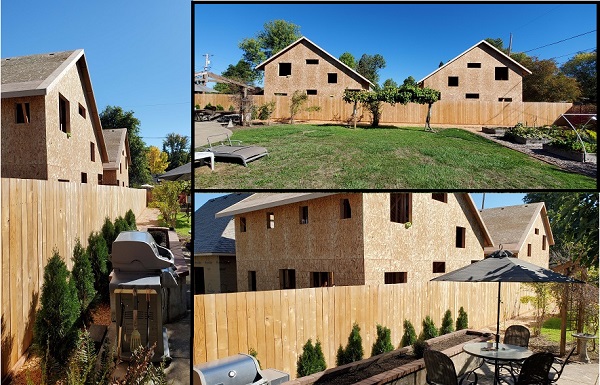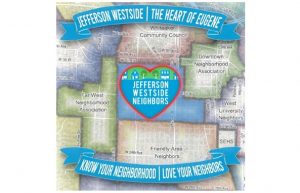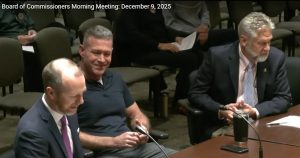Middle housing nightmare
4 min read
by Eben Fodor
It seems like a good time to share my experiences with a middle housing project being built next door to me.
Right now two related things are going on: the city council is readopting its middle housing code due to a court-ordered remand; and the campaign season is underway for city council and mayor, including two candidates who staunchly advocated for this code.
I have been a leading critic of middle housing both because of its failure to produce affordable housing, and because it allows real estate investors to make a fortune by exploiting and destroying affordable neighborhoods.
I testified against HB 2001, the state middle housing legislation championed by Tina Kotek back in 2019, and also testified against the Eugene Planning Department’s radical move to go far beyond state requirements, championed by Councilor Matt Keating and 2024 mayoral candidate Kaarin Knudson.
So it was with great irony that I became one of the first victims of Eugene’s new middle housing code.
A developer bought the little old house next door and submitted plans to raze it and build a “cottage cluster,” one of many middle housing variants now allowed in all single-family neighborhoods in Eugene. The “cottage cluster” concept might sound appealing if it were like the Amazon Cottages development with small, single-story homes oriented around an attractive courtyard.
However, the city’s botched implementation means that developers can create large, crowded, ugly, two-story structures that heavily impact all the surrounding neighbors and have no internal appeal.
A total of six houses are being built on the lot next door. Three of them will be five feet from my property line and three next to my neighbor on the other side. These “cottages” will be larger than the average existing houses on my street. They are all two-story buildings with second-floor view windows oriented towards exploiting views in neighbors’ yards, instead of directed toward their own internal views.
The construction impacts are worse than one might imagine because there is far more work involved in building six houses instead of just one. They’ve been building for a year now and probably have another year to go. This is heavy-duty construction that is commercial in nature and seems inappropriate for Eugene’s quiet residential neighborhoods. There is heavy equipment noise most days—plumes of dust, mud everywhere, and plenty of code violations.
The resulting development is actually worse than I had anticipated, even though I understood middle housing pretty well as a professional planner. There are already 11 second-story windows that stare at my beloved patio – and there are still two more houses to be built.
The total loss of privacy in my backyard garden is probably the most costly to me. And it was completely unnecessary. A simple rotation of the floor plans could have placed all these invasive windows away from neighbors with no added cost to the developer.
The thing is, it’s not as bad as it could have been. That’s because the Eugene Planning Department bent over backwards to make sure developers could exploit our neighborhoods with hardly any restrictions. With the city’s code, cottage cluster houses could average 1,800 square feet each and be as large as 2,000 square feet.
Other types of middle housing have no size limits at all. Quadplexes and triplexes can be separate units instead of a single structure, so that means a “quadplex” could be four separate luxury homes of 4,000 square feet each.
While it’s easy to blame city planners for the local version of this fiasco, the question now is: Where do we go from here? Well, if we can elect a decent city council this year, there are two things that would make a big difference.
First, all the middle housing options need to be scaled back to the minimum required by state law and not the radical city planners’ version. Giveaways beyond the minimum state requirements should generate truly affordable housing units.
Second, there need to be some basic design standards so that these middle housing units are truly compatible with single-family homes and are not the nightmare that is destroying my neighborhood.
Come by 396 E. 32nd Ave. and see the kind of thing that can be built right next to your lovely home. Ask yourself if the loss of your privacy, loss of on-street parking, extra noise and light pollution, oppressive ugliness, and two years of construction impacts are worthwhile sacrifices to create more expensive, market-rate housing in Eugene.
Upper right: View of development from author’s formerly private backyard garden area. $10,000 in new fencing and landscaping was paid for by author with no developer contribution. Lower right: View from author’s patio shows the invasion of privacy from two of the six houses being built. Left: Even with five-foot setbacks, two-story development like this still feels overbearing. Rooflines could have sloped away from the property line, relieving this impact on neighbors at no cost to the developer.



